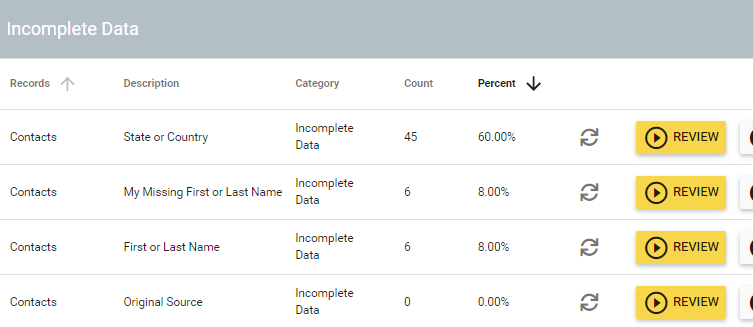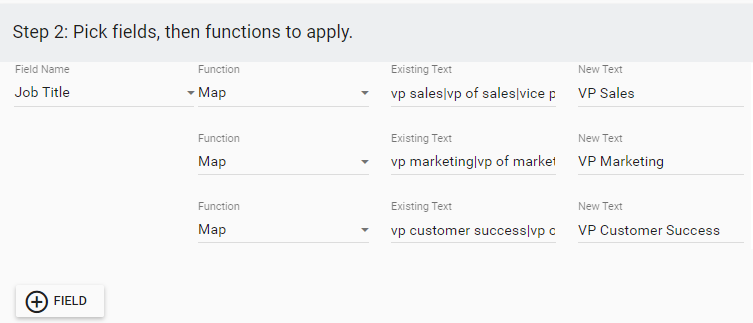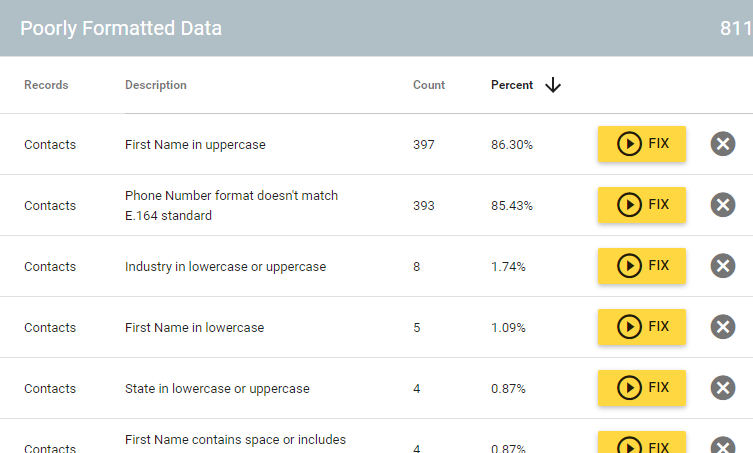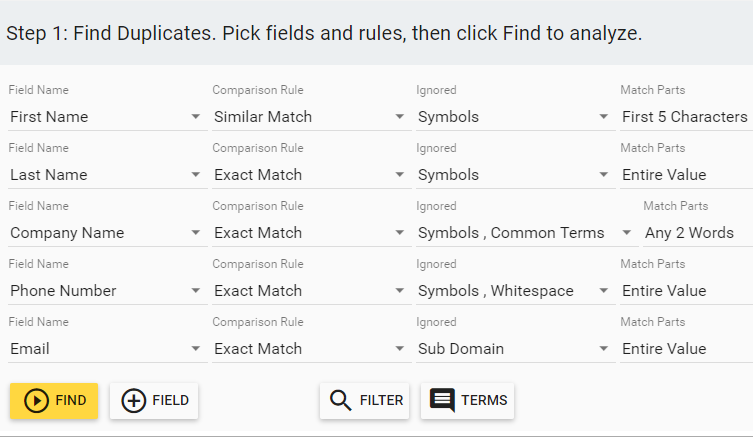Lead scoring is essential to a well-oiled marketing and sales machine.
For marketing teams, the number one goal is to send quality leads to the sales team, not just any lead that comes down the pipeline. When the leads aren’t panning out on the backend, you can bet that the marketing team is going to hear about it.
For sales teams, everything comes down to productivity. Sales reps need to be able to spend their time engaging with prospects that are the most likely to convert. How reps spend their time is always a top priority for sales leadership. When they spend their time on low-quality prospects, it’s a problem for both the sales team and marketing team and can lead to strain in the workplace.
However, there are some nuances when it comes to lead scoring in HubSpot, Salesforce, Intercom, and any other CRM that can make it difficult for both marketing and sales teams to accurately score leads and identify the most promising opportunities in their system.
Accurate lead scoring is especially important in account-based marketing, where you must engage with several decision-makers within a company. In those cases, a single contact that you would consider to be a “perfect prospect” on their own may not be enough to move their entire organization toward your solution. You have to have a way to score organizations as a whole in account-based marketing.
Most often, lead scoring issues are a result of bad data.
Either you're not collecting enough data to accurately score prospects, or the data that you are collecting is inaccurate or too full of inconsistencies and errors to glean the information that you need to reliably score opportunities in your CRM.
In this article, we’ll cover some of the common lead scoring issues that companies face within HubSpot and provide some simple tips for helping you to overcome those issues.
1. Contacts Not Associated with the Right Company
Stray contacts not being associated with the right company (or any company at all) is a huge problem in lead scoring.
You likely have company-reliant variables built into your lead scoring model, particularly if you have a B2B offer or engage in ABM.
Many company-centric variables could affect the score of a lead or account:
- The size of the company
- The company’s annual revenue
- Private vs. public
- Similar solution investments
- Recent funding rounds
- The stakeholders you are able to connect with
Many values can make certain accounts more likely to convert or more desirable and, therefore worth the limited time of your sales associates. These values can be used to determine if a lead is marketing qualified.
Having free-floating contacts in your database can hinder your lead scoring system in multiple ways. First, with the lead disconnected from the company, it may break your score completely. Second, without that connection in place, you may de-prioritize high-level decision-makers that are critical to success with that account. Third, it can break your critical marketing automation systems and hurt your ability to accurately segment contacts to deliver personalized messages.
Upstream, these issues will impact their engagement with sales reps, your content, and any communication that comes their way. If those variables are also built into your lead scoring model, these issues contribute to inaccurate lead scores in your system.
2. Missing Data Breaks Lead Scoring
You have probably come across a lead with a low score and immediately thought it seemed strange. Maybe you know a lot about that particular prospect and, off-hand, it seems they should be scored higher.
So you dig in and quickly find that the lead isn’t receiving its full score because it has missing data values that are being used to score the lead.
Lead scoring is typically straightforward. You assign positive and negative points to attributes or actions for each lead. For example, holding a position like “Marketing Director” in a company with 500+ employees might make them more valuable and thus necessitate a higher score. But if you don’t have data for their job title or the company’s employee count, you aren’t going to receive an accurate score for that lead.
If your lead scores are broken, how do you discern if a lead is marketing qualified? Your lead score determines where the lead is placed throughout the marketing automation system and broader marketing activities. Later, it impacts how they are prioritized by sales teams. A qualified lead should be treated differently than those that are not qualified leads.
3. Field Inconsistencies Lead to Inaccurate Lead Scores
Data doesn’t have to be missing or incorrect to cause problems, it could just be inconsistent.
Let’s run through an example. Let’s say that you operate a high-dollar local service business. Maybe you operate in the tri-state area. Because you’re based in New York, you prioritize leads from there. It’s easier and cheaper for you to service people that are close to your headquarters.
But how the location value that is stored in your database might affect the accuracy of your lead scores. For instance, you might set up your lead scoring to attribute more points to a lead that has “New York” listed as their state.
The problem with this is that there are many ways that “New York” could be represented in that field:
- NY
- New York State
- New York, New York
Yoru CRM may not be able to automatically detect these as equal to “New York,” and therefore would not count them toward the prospect’s lead score.
Rather than adding every possible combination to your lead scoring model and overcomplicating it with rules that make your system hard to maintain and understand, it makes much more sense to try to improve your data quality, as that will help you in areas outside of just lead scoring.
Without accurate lead scores, your marketing automation systems may not prioritize the right leads as they move through the funnel.
Ensuring that you have consistent data is critical for accurate scores in any lead scoring model.
4. Duplicate Records Lead to Inconsistent Scoring Results
An Experian study found that as many as 94% of organizations suspect that their customer and prospect data is inaccurate. According to experts, duplication rates as high as 10% are not uncommon, especially without a customer data quality program in place. Deduplication for HubSpot, Salesforce, and other CRMS is absolutely critical for consistent lead scoring.
Duplicate records are a serious pain in the neck when it comes to lead scoring. Every duplicate creates several new questions:
- Which record do you use?
- Which record is more complete?
- Who is the lead assigned to?
- How do you merge duplicate records in bulk?
These are critical questions in any lead scoring model. First, you have to actually be able to identify the fact that you have duplicate records for a given lead. Some CRMs have ways to automatically detect and merge duplicates. For example, Hubspot does have a system for automatic deduplication, but there are limitations in how the system detects those duplicates.
When CRMs cannot reliably automatically catch duplicate leads, you have to review and merge the records by hand. In databases with thousands of customer and company records, that can be a time-consuming task.
5. Redundant Fields Cause Inaccurate Scores
Redundant and repeated fields can cause scoring errors or generally inaccurate lead scoring in CRM systems. Ultimately, redundant fields can create new inputs that muck up your lead score.
Often, when you import data to update existing contacts, you may accidentally import redundant information. Both fields might express the same thing but use different names or formats for the data.
For instance, “headquarters,” “location,” and “company location” might all mean the same thing in terms of what the information tells you about a company but may reside in three separate fields.
This leads to questions and potentially inaccurate scores. What if the three fields contain different information? Which one of them is accurate and up to date? Often, you’ll need to perform some research by hand to figure that out, which is time-consuming.
It’s best to consolidate these fields to avoid the problem entirely. There is no reason to store the same data in three separate fields with three different names. At best, it isn’t very clear. At worst, it’s harmful to your marketing and sales efforts with that prospect.
6. Importing New Data Can Overwrite Critical Lead Data
Importing new data to update old fields can be dangerous.
Changing the information contained within certain fields can drastically change the ultimate score for the prospect. Just because the data was freshly imported doesn’t necessarily mean that it is more accurate or consistent.
Overwriting existing data is a risk. Instead, you should put time into comparing the two datasets before making widespread changes that can be difficult to undo.
Insycle is the Customer Data Swiss-Army Knife
Insycle is the perfect tool for cleaning customer data and improving the accuracy of your lead-scoring initiatives.
Using Insycle, you can:
Associate Free-Floating Contacts With Their Company, In Bulk
Insycle makes it easy to add, remove, or set (overwrite) existing associations, in bulk and automatically. You can use any fields in your database to match contacts to companies. For HubSpot users, you can manage advanced use cases such as child-to-parent associations, multiple association labels, and associating in HubSpot Workflows.
%20and%20set%20your%20Account-Based%20efforts%20on%20track.png?width=753&height=312&name=How%20to%20Fix%20HubSpot%20CRM%20Associations%20Automatically%20(Without%20Spreadsheets)%20and%20set%20your%20Account-Based%20efforts%20on%20track.png)
Identify Leads that Are Missing Values In Critical Lead Scoring Fields
You can use Insycle to track records that are missing data in any field. Additionally, the Customer Data Health Assessment contains many templates that track records that are missing data for important fields on an ongoing basis.

Improve the Consistency of Your Data and Standardize Critical Lead Scoring Fields
With Insycle, you can standardize data in any field that is critical for lead scoring. In the example below, we are standardizing several job title variations to a consistent format.

Additionally, you can track the standardization of important fields in your Customer Data Health Assessment.

Deduplicate Customer Records In Bulk, Using any Field
With Insycle, you can duplicate customer records in bulk using any field in your database, to ensure that lead scores have all relevant context for each led and opportunity. You also have advanced controls that allow you to compare and slice your data in advanced ways.

Compare Data Imports to Existing CRM Data to Spot Error
Insycle also allows you to compare CSV import data to existing records in your database to ensure you aren't overwriting data that affects lead scores.

Insycle is the Customer Data Swiss-Army Knife
Insycle is a comprehensive data management tool that helps improve lead scoring by identifying and fixing dirty data issues in bulk.
But Insycle is helpful for much more than lead scoring.
Insycle automates data management processes and gives you control of your customer data management, allowing you to implement best practices.
With Insycle, you can have more visibility into and fix more issues in your CRM, leading to better collaboration with teammates and data management processes that fuel growth. Learn more about how Insycle can help your team improve lead scoring and clean up your CRM data.





